


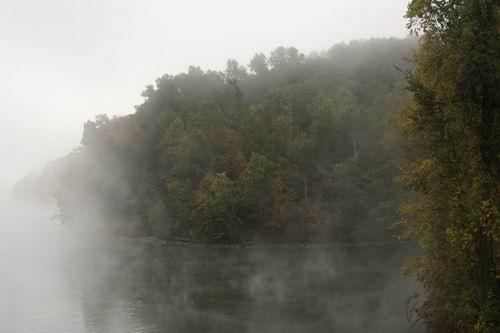
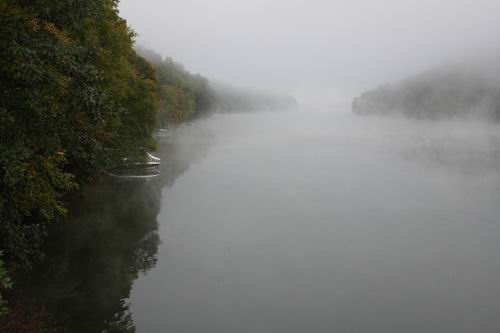
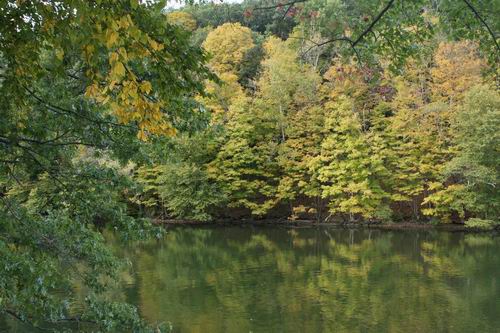

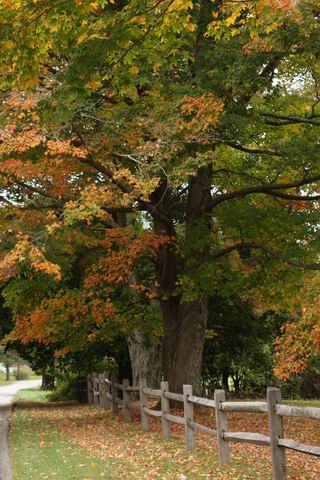
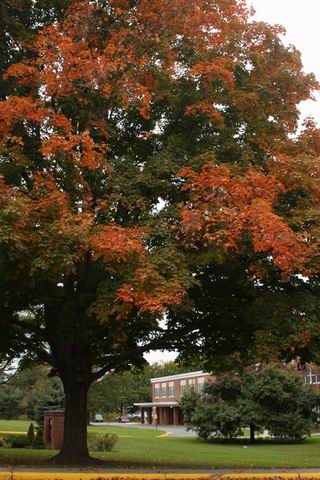









Orange, red, yellow, and purple foliage warms me up as the temperatures drop. I am amazed by how quickly the trees have changed as a result of shorter days and cooler (okay – freaking COLD) nights. This is my first true fall, so I routinely—giddy and unashamed, pull to the side of the road, jump out of my car, scamper though the brush, and rapid fire my digital camera. …and I am told that this years display pales to the norm. Bummer. What factors play in the determination of a spectacular or contrary dull show?
Sorry, but we need to mention some basic bla, bla, bla plant physiology. It starts with photosynthesis… light, carbon dioxide, and water into the leaf— poof—sugary goodness to feed the plant flows out of the leaf. When the days shorten and temperatures drop, a barrier is created and that exchange slows (and eventually stops). As a result, chlorophyll is depleted faster than it is replaced, sugars build up inside the leaf, and the colors change.
The hue depends on the dominant light reflecting pigments in the plant or tree. When green chlorophyll is broken down, the already-present orange and yellow pigments are exposed. (carotenoids, and xanthophylls, respectively)
The show stoppers, the plants that contain anthocyanins, which reflect red, pink, or purple, are not present until the leaf begins breaking down the chlorophyll. Temperature, light, and water supply influence the concentration of these sugars and ultimately determine the brilliance of color. Since those factors are highly variable each year, no autumn is ever the same.
BAD Forecast:
- Early frost is more likely to kill leaves making them turn brown and fall sooner from the trees.
- Rainy days occurring near peak coloration will decrease the color intensity.
- Long overcast periods diminish color presentation.
- Strong wind storms blow the leaves from the trees.
- Wet and humid growing seasons lead to many leaf infections and premature leaf drop.
GOOD for Glorious Color:
- Unclouded sunny days will enhance the leaf color because the more light exposure the leaves have, the brighter the red color.
- Slightly dry conditions in the last half of the growing season and on into the fall.
- Cool, but not freezing temperatures favor anthocyanin production, resulting in brighter reds.
- Little to no wind helps keep leaves on the branches longer
Leaves containing primarily anthocyanins will appear RED.
Red Maple, Sweetgum, Black gum, Black Oak, Northern Red Oak, Shumard Oak
Leaves with good amounts of both anthocyanins and carotenoids will appear ORANGE.
Black Maple, Sugar Maple, Birches, Hickories, American Beech, Chestnut
Leaves with carotenoids but little or no anthocyanins will appear YELLOW.
Elms, Black Willow, Buckeyes, American Linden, Persimmon, Northern Catalpa
Fine Gardening Recommended Products

A.M. Leonard Deluxe Soil Knife & Leather Sheath Combo
Fine Gardening receives a commission for items purchased through links on this site, including Amazon Associates and other affiliate advertising programs.

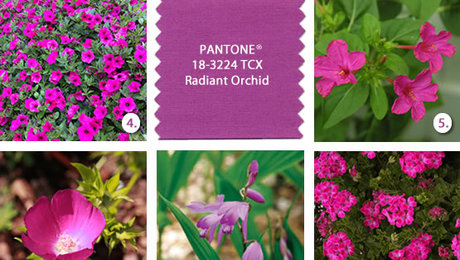

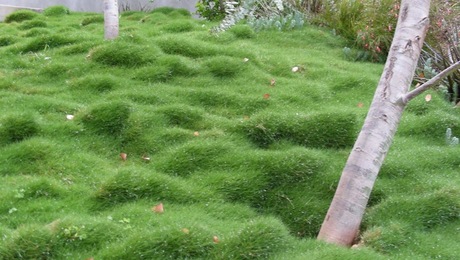














Comments
Log in or create an account to post a comment.
Sign up Log in